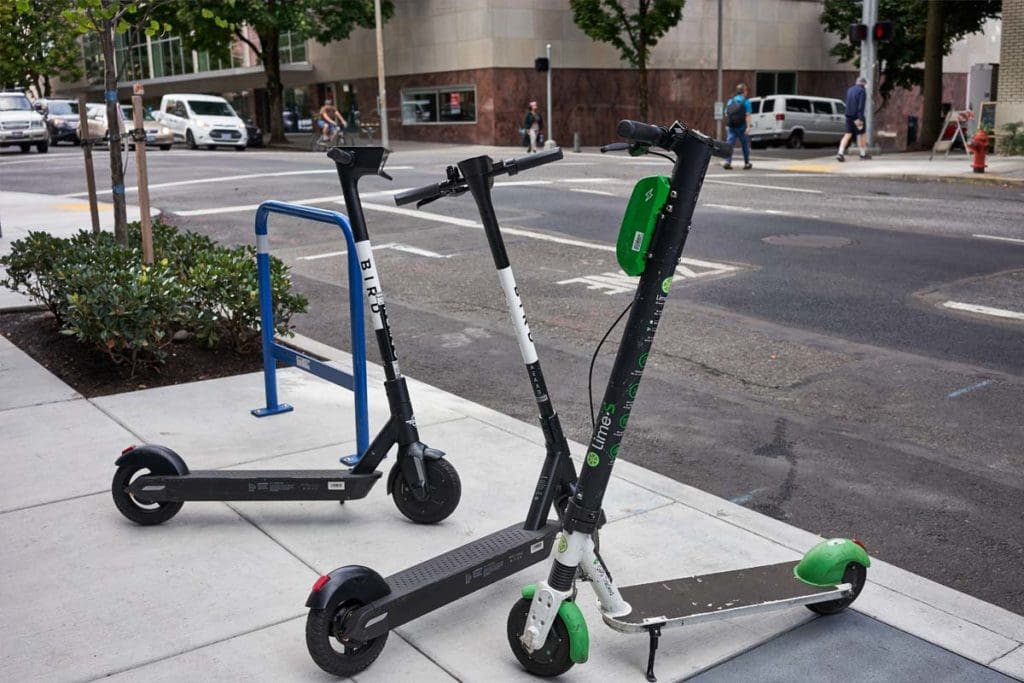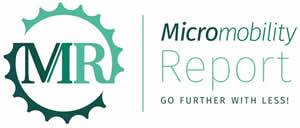Platform Delivers the Ride Data to Debunk Misconceptions

Portland, Oregon, USA
An automated data collection service designed specifically for micromobility is enabling city officials to easily address and debunk common concerns and criticisms of shared scooter and bike schemes, while steering a more informed course for the services.
The Ride Report application is enabling council officers to walk into public forums and effectively respond to anecdotal criticisms of scooter and bike share services, such as safety and parking, according to Ride Report’s senior vice president of shared mobility, Michael Schwartz.
“There is always controversy surrounding the introduction of shared services and this data puts these programs in context by being able to quickly drill down to accurate figures,” he said.
“Ride Report’s dashboard empowered program staff to show up at community meetings, internal meetings, or in ‘gotcha’ interviews and be able to confidently say ‘check out these stats’.”
“For example, officials challenged about three scooter crashes in a year can put that in context by showing that was within 12 million trips over that period. Then you realise the scooters are no more dangerous than other forms of transport.”
Michael said the car industry has spent a lot of time creating data for cars but there hasn’t been the same level of information compiled for scooters, bikes and other forms of micromobility.
“Now officials can show up to conversations with traffic engineers and policy makers and be able to show this is a real mode of transportation serving people in their city,” he added.
“We’ve heard countless stories of how Ride Report’s dashboard empowered program staff to show up at community meetings, internal meetings, or in ‘gotcha’ interviews and be able to confidently say ‘check out these stats’.
“They can show where and how rules are being complied with, while showing the types of services being provided.”
“Councils in Australia are world leaders in their level of data analysis to assess share services in their cities.”
The shared mobility management platform is helping cities launch, manage, and evaluate shared scooter, bike, and car programs. Its tools allow users to manage policies and compliance and analyse historical travel patterns, as well as track and invoice operators for fees.
Established in Portland in 2014, Ride Report will be one of the active transport innovators exhibiting at next month’s inaugural Micromobility Conference & Expo in Sydney, as the company builds a growing list of clients in Australia.
Councils in Australia are world leaders in their level of data analysis to assess share services in their cities, according to Ride Report, which is currently working with local governments in Melbourne, Brisbane, Adelaide, Townsville, Mackay, Geelong, Ballarat and the ACT.
“They have been particularly analytical in using the data for benchmarking and seeing how they can expand their programs – more than anywhere else in the world,” Michael said.
“They want to see how many scooters trips are being undertaken and how many vehicles are being being deployed per 1,000 residents or per square kilometre, and how that compares to services in other Australian cities.
“If you’re trying to accelerate change, you need a speedometer to accurately measure the impact and show the benefits; are you getting your money’s worth, how can you get more of what you’re trying to achieve.”
New Shared Mobility Index
Ride Report made those comparisons and analysis even easier by launching a shared mobility index late last year, and updated the tool this month.
“City officials are finding it saves them a heap of time because they don’t have to answer every data enquiry.”
The index has been developed over the past four years, working with city, state, regional, and federal agencies to ingest data from millions of shared bike and scooter trips.
“Officials considering an extension to their programs or the introduction of rules can easily look at what other cities are doing successfully,” Michael explained.
“The index is also visible to the public and city officials are finding it saves them a heap of time because they don’t have to answer every data enquiry about usage levels or how the program is performing.
“So far, Melbourne is the only city in Australia that has launched the index but we hope to have an announcement at the conference about other cities getting on board.”
He said Ride Report is also looking to work with Australian government on a larger scale – at a State or Federal level.
“We work with the NZ transport authority and we would like to work on that larger scale with Australian government because we’re finding insights such as carbon offsets really work on that higher scale.”
Ride Report’s Origins
Ride Report was initially created as a mobile app to measure bike trips and share that data with public agency active transportation planners.
“When the share scooter and e-bike revolution happened, the platform was easily adapted to measure those services.”
“When our shared micromobility tools first launched, they simply showed people where the vehicles were, in real time, but even that was truly revolutionary at the time,” he said.
A few years later, the tools now enable agencies to calculate and display months of usage figures with a few clicks, data that would otherwise take many hours to assemble. Those figures can then be used to calculate fees paid by service operators to the agencies or, in a number of cases, subsidies paid back to the operators.
“Especially after the pandemic, we’re seeing a wish by agencies to subsidise certain trips – for areas that aren’t as lucrative for operators, where governments have a hard time sending public transportation or where there’s a high priority for some other reason,” he said.
“However, in high traffic areas, agencies might charge a fee for the operators. This is all automatically calculated using the platform.
“Governments considering building a new bike lane can examine if people are using streets in that area and identify their preferred routes.”
“We have had some customers reduce fees or even subsidise trips that start or end at transit stations, particularly during critical mobility hours.”
Ride Report is also being used to track share service use for last-mile connections with public transport, as well as managing specific fees for journeys to and from public transport stations and stops.
“In Brisbane, staff are tracking the performance of the last-mile trials for transit in Buranda,” he said.
“Staff in Canberra are using the tools to support mobility during upcoming transit construction.
“We have had some customers reduce fees or even subsidise trips that start or end at transit stations, particularly during critical mobility hours.”
Now Ride Report is planning to move beyond shared services and be able to talk about all micromobility by incorporating owned bikes and scooters.
“We have a pilot in NZ which incorporates more traditional counts collected by people with clip boards or automated counters in spot locations. We then use shared micromobility data and a few other data inputs to estimate the number of trips on owned scooters and bikes across the entire street network. Now with a few clicks staff can understand bike volumes for any street in their city,” Michael said.
Find out more about Ride Report.
The 2022 Micromobility Conference & Expo will be held at Sydney’s Royal Randwick Racecourse on the 25th and 26th November.
